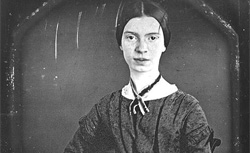Tom Huizenga, on NPR Music’s “Deceptive Cadence” blog, attempts to decode the intriguing and intimidating lexicon of the opera house.
Talk Like An Opera Geek: Vocal Tricks And Trills
Categories: Confessions Of An Operaholic
November 3, 2011
by Tom Huizenga
(Talk Like An Opera Geek attempts to decode the intriguing and intimidating lexicon of the opera house.)

Baffled by buffo? Talking about opera can be like walking through a linguistic thicket.
Ever been to a cocktail party and feel totally lost when some know-it-all opera jerk spouts on about “the mezzo-soprano’s ornamentation in the cabaletta lacked a certain bel canto sensibility, and because of the high tessitura, she sounded like little more than a comedia dell’arte soubrette in her secco recitative.”
Fear not. Read on — and hear the musical excerpts — and you’ll be able to fire back with opera jargon of your own and actually have some idea of what you’re talking about.
Opera — like wine, baseball or deep sea diving — has its own special vernacular which we’ll try to decode and disentangle. In the coming weeks we’ll tackle opera styles, voice and role types, and general musical palaver.
To fire up the series, this week we’ll break down a few vocal tricks and styles of singing.
Got any jargon you would like deciphered? Let us know in the comments section.
Talking Opera: Vocal Tricks And Trills

Coloratura
- Artist: Cecilia Bartoli
- Album: Sacrificium [Deluxe Edition]
- Song: Berenice, opera [Cadrò, ma qual si mira]
With a set of vocal cords that can fire off flurries of notes like a tommy gun, mezzo-soprano Cecilia Bartoli is well-equipped to handle the speed and agility that are the calling cards of coloratura. Daredevil runs up and down the scale, punctuated with high notes, characterize a style that began in the baroque era and still thrives today. The word can refer to both the style and the singer.

Mezza Voce
- Artist: John McCormack
- Album: In Opera: Prima Voce
- Song: Manon, opera in 5 acts [Il sogno]
This term literally means “half voice.” Sounds simple, right? But it’s disappointing that today so few singers have mastered it. You have to sing at half volume and still be heard in the back row. That requires full breath support, steering clear of anything that resembles crooning. Here, the Irish tenor John McCormack effortlessly glides into a perfect mezza voce.

Trill
- Artist: Joan Sutherland
- Album: La Stupenda: The Supreme Voice of Joan Sutherland
- Song: Les contes d’Hoffmann, opera in 4 acts [Les oiseaux dans la charmille]
A true trill is harder than it might seem. Technically, it’s the rapid alternation of a note and the next note above it, keeping the ground between them nice and clean. Joan Sutherland was, as you might say, licensed to trill. She had a unique combination of power and flexibility.

Messa di Voce
- Artist: Leontyne Price
- Album: Highlights
- Song: La forza del destino, opera [Act 4: Pace, pace, mio Dio!]
A killer messa di voce, which essentially involves the attack of a sustained tone, includes three phases. The tone must start soft (pianissimo), then swell much louder (to fortissimo) and then slowly decrease in volume back to the original softness. For decades, soprano Leontyne Price basically owned this maneuver at the opening “Pace, pace mio dio” from Verdi’s La Forza del Destino.

Falsetto
- Artist: David Daniels
- Album: Handel: Operatic Arias
- Song: Giulio Cesare in Egitto, opera, HWV 17 [Cara speme]
Almost anyone can sing in falsetto (hence Tiny Tim), but some male opera singers make gorgeous sounds in the female register. They are called countertenors, and David Daniels is among the finest, with no trace of the hooty quality that sometimes comes with the high-flying vocal territory.











 “
“

